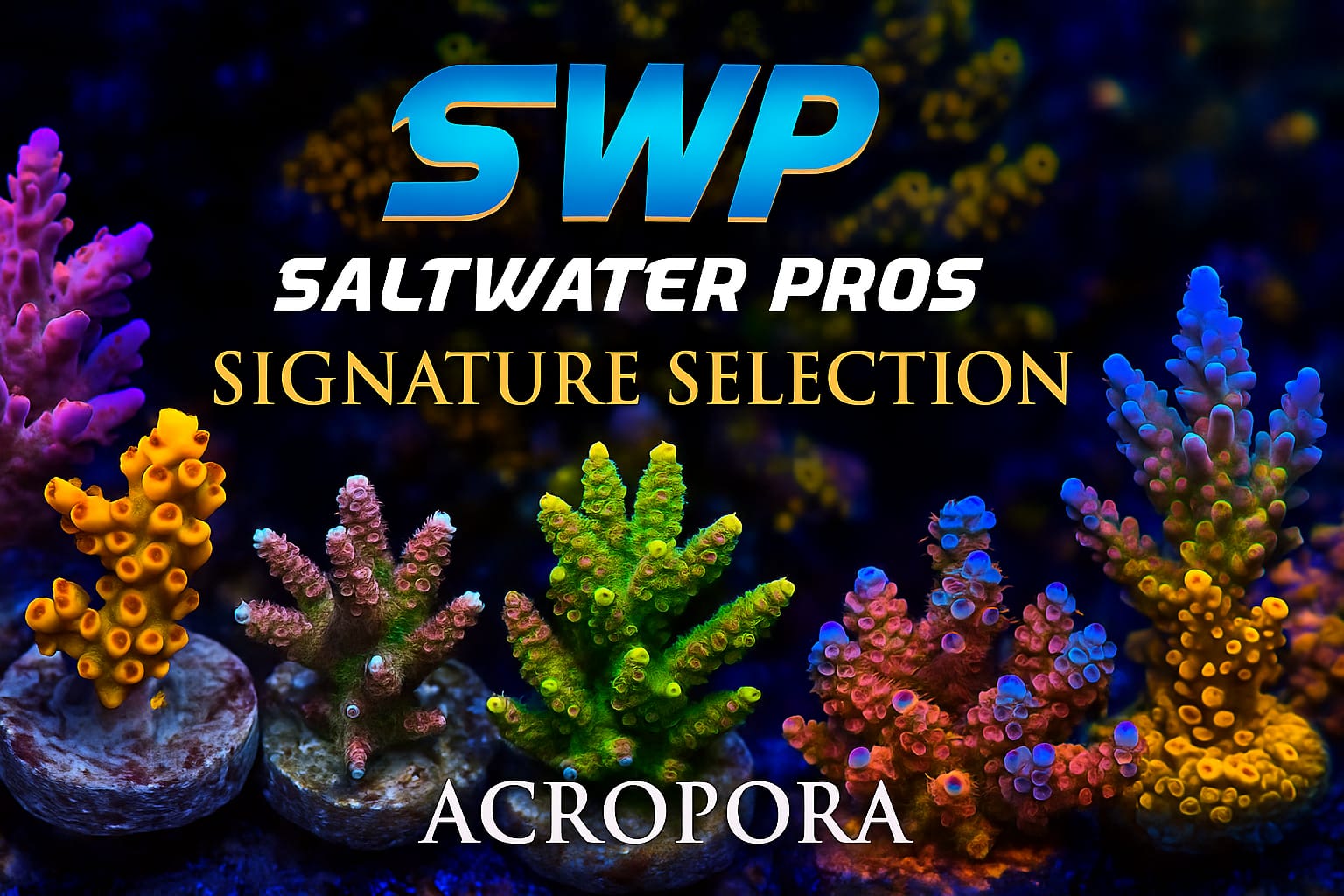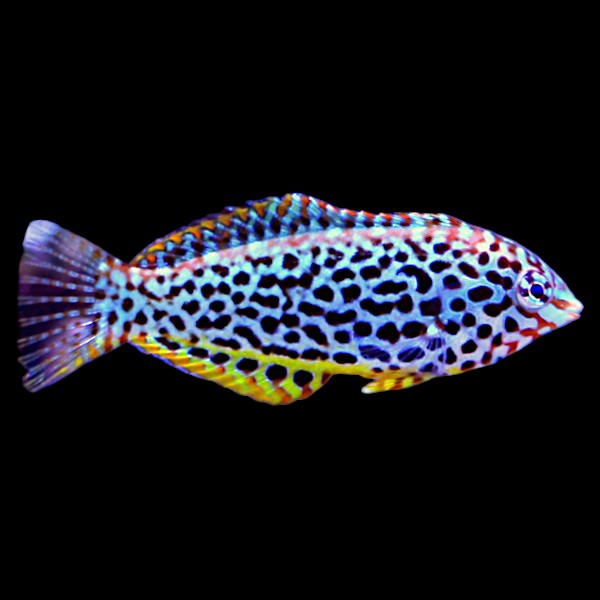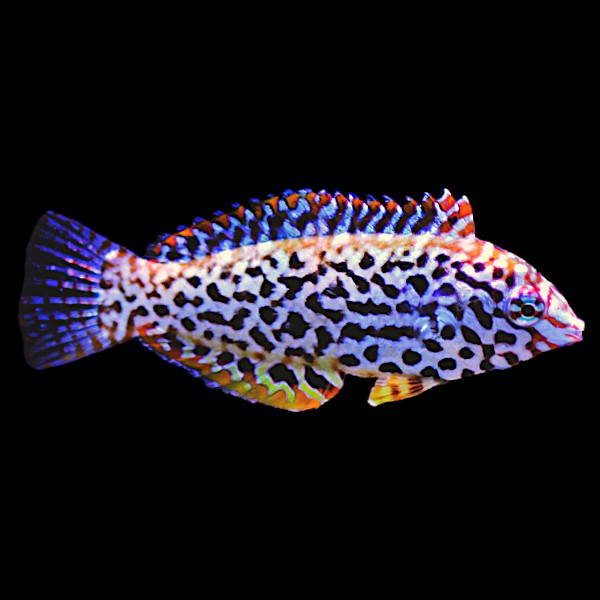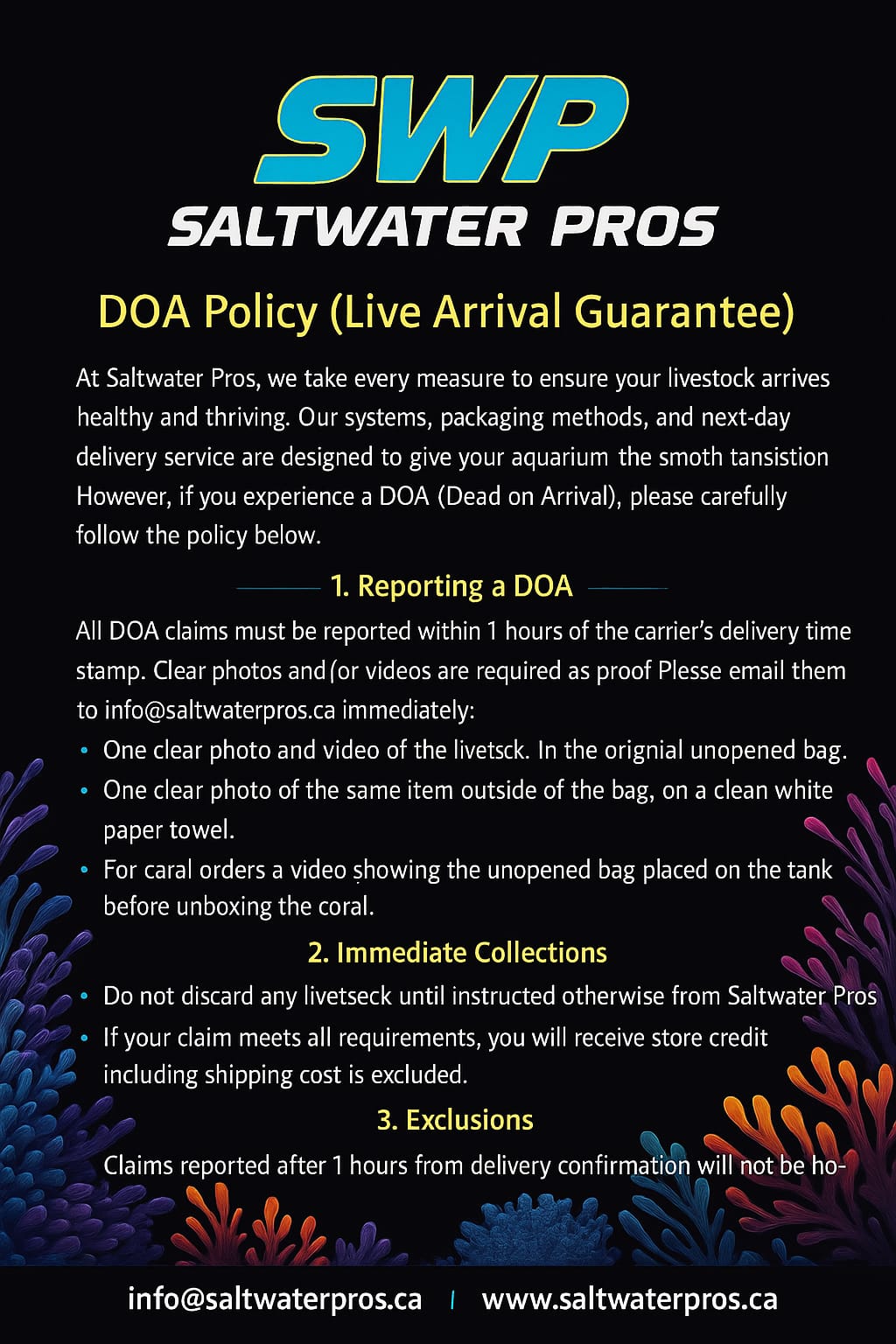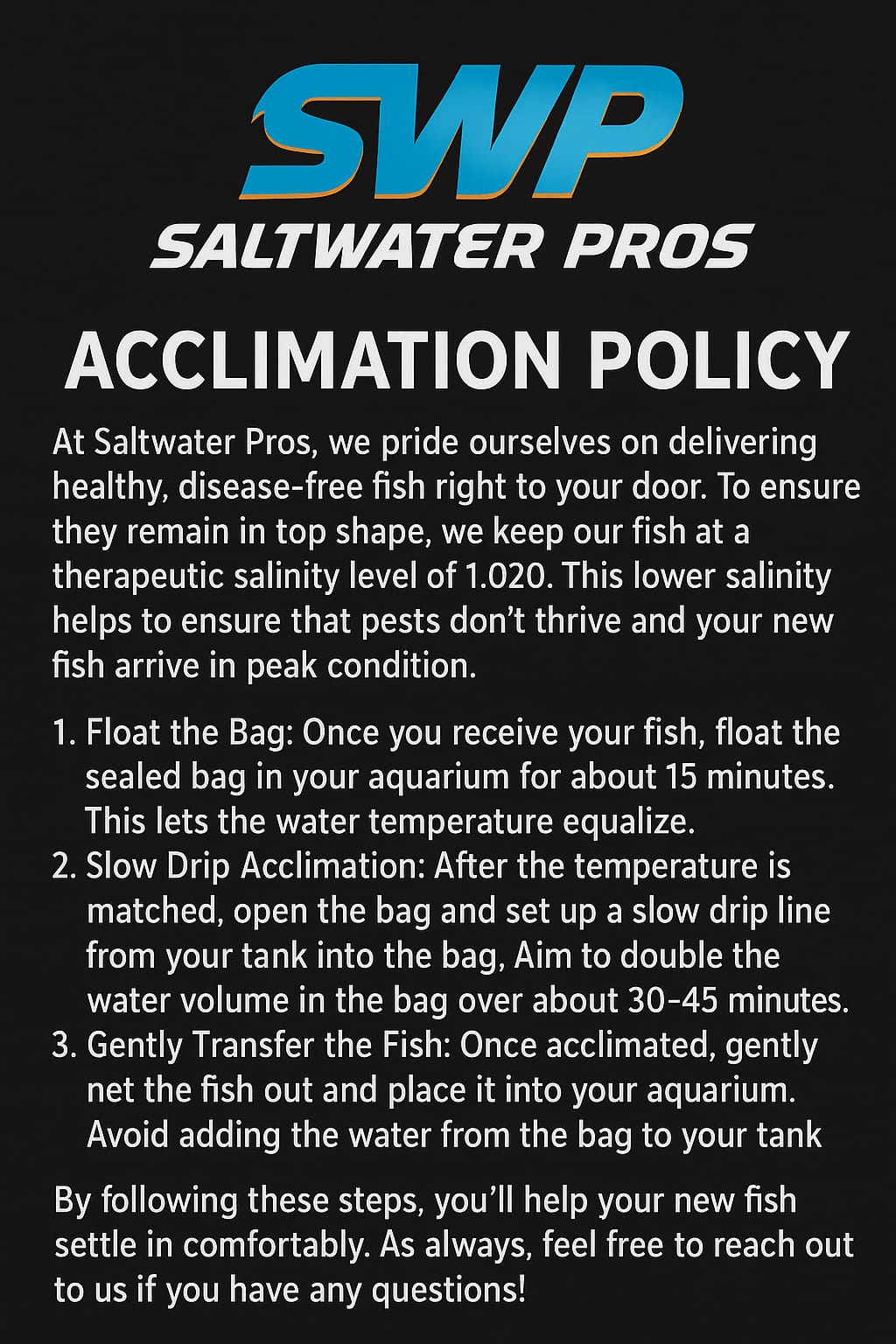Description
Click HERE to read our Dead On Arrival (DOA) policy.
Click HERE for how to acclimate the fish.
Macropharyngodon meleagris, commonly known as the Leopard Wrasse or the Blackspotted Wrasse, is a fascinating and beautiful fish species highly sought after by marine aquarists. Here's a detailed care guide for these stunning creatures:
Caring for Leopard Wrasse, scientifically known as Macropharyngodon meleagris, requires attention to their specific needs to ensure their health and well-being. Here are some essential care guidelines:
Tank Setup: Provide a mature aquarium with plenty of live rock and a sandy substrate. Leopard Wrasse enjoy burrowing in the sand, so ensure there is enough depth for them to exhibit this natural behavior. The tank should also have ample hiding spots and open swimming areas.
Water Parameters: Maintain stable water parameters within the following ranges:
Temperature:
72-78°F (22-26°C)
pH: 8.1-8.4
Salinity: 1.020-1.025
Ammonia, nitrite, and nitrate levels should be kept at near-zero levels. Regular water testing and water changes are essential for maintaining water quality.
Feeding: Leopard Wrasse are carnivorous and primarily feed on small invertebrates and crustaceans in the wild. Offer them a varied diet that includes high-quality frozen foods such as mysis shrimp, brine shrimp, chopped seafood, and live foods like copepods and amphipods. Ensure food items are appropriately sized for their mouth.
Supplemental Feeding: Since Leopard Wrasse have small mouths and can be picky eaters, providing a constant supply of live copepods and amphipods can be beneficial. Consider setting up a refugium or a separate feeding container to culture these live foods.
Compatibility: Leopard Wrasse are generally peaceful but may exhibit aggression towards other wrasse species or similar-shaped fish. Avoid keeping them with aggressive tank mates or those that may harass them. They can be kept in a reef tank but may consume small crustaceans and shrimp.
Acclimatization: When introducing Leopard Wrasse to a new aquarium, acclimate them slowly to prevent stress and shock. Drip acclimation over several hours is recommended to help them adjust to their new environment.
Behavior and Observation: Spend time observing your Leopard Wrasse to monitor their behavior and health. Look for signs of stress, disease, or malnutrition. Healthy Leopard Wrasse are active swimmers and display vibrant colors.
By providing a suitable environment, a varied diet, and attentive care, you can ensure the health and well-being of your Leopard Wrasse, allowing them to thrive and showcase their stunning patterns in your aquarium.
- Care level: Expert
- Temperament: Peaceful
- Diet: Carnivore
- Reef Compatible: Yes
- Family: Labridae
-
Minimum Tank Size: 90 gallons
- Size: 2"-3" inches

